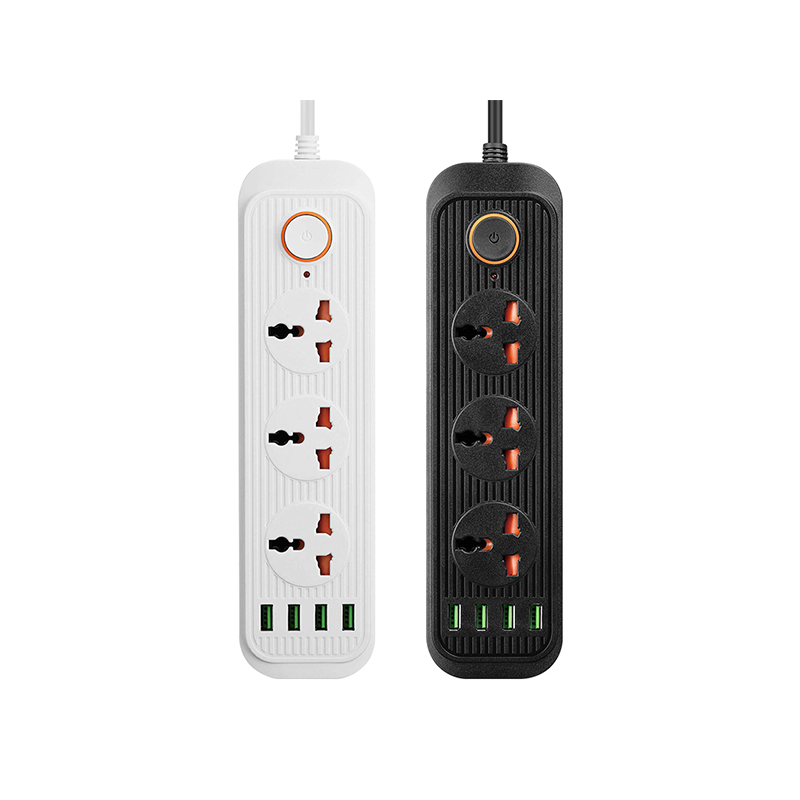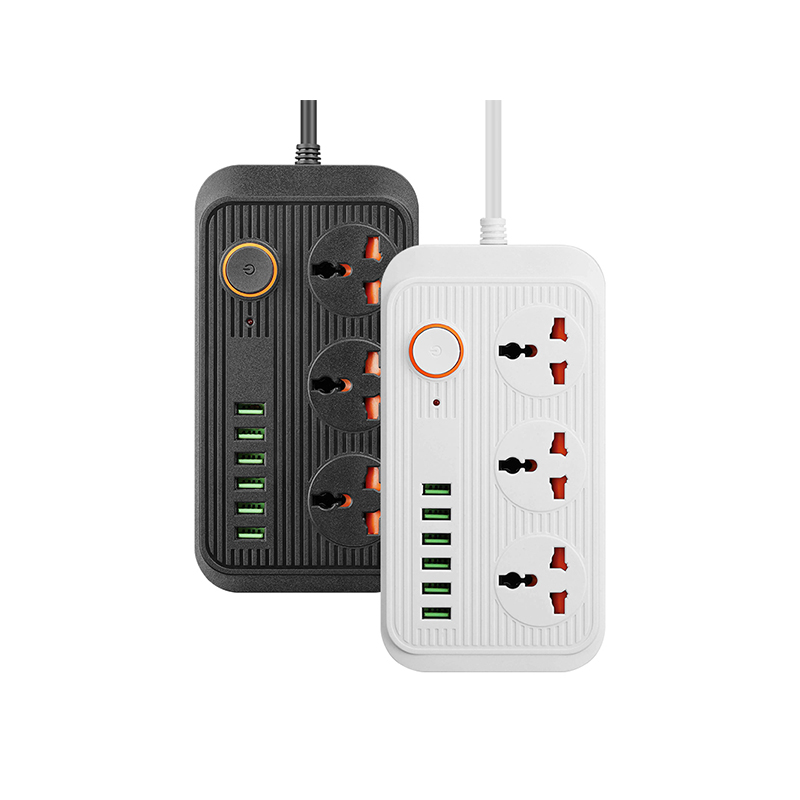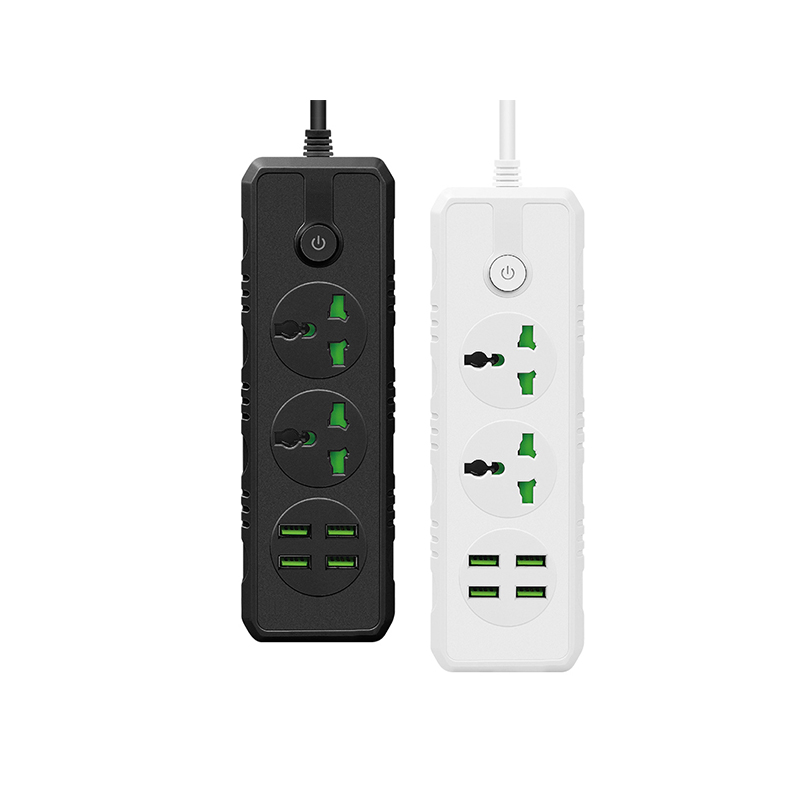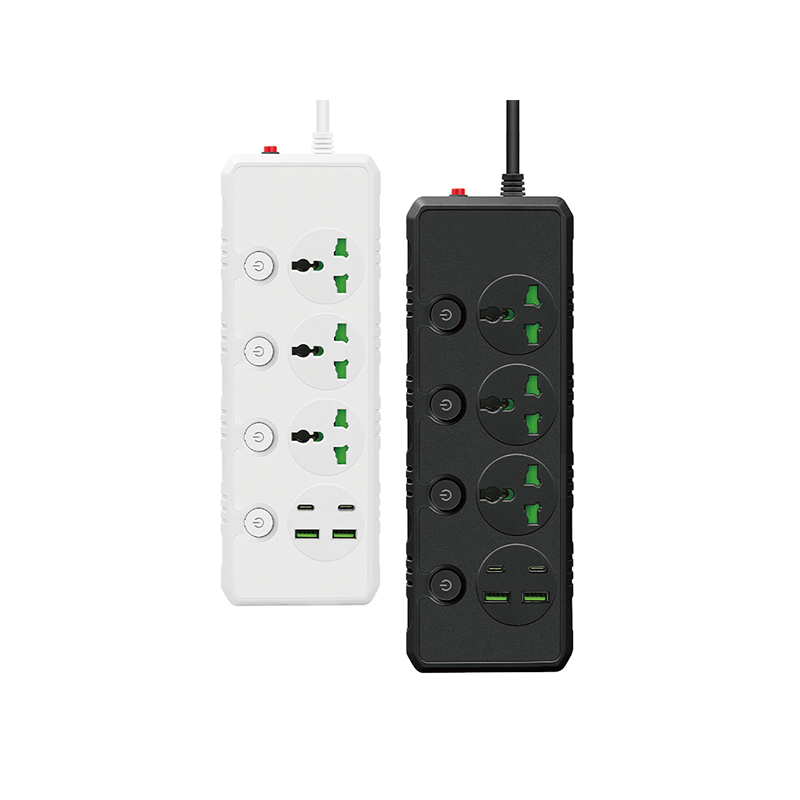What special protective measures are required for universal sockets when used in high humidity or corrosive environments?
Release Time : 2025-04-29
When using universal sockets in high humidity or corrosive environments, it is essential to take effective special protective measures. Such environments pose significant challenges to electrical equipment and may cause corrosion of metal parts, degradation of insulation performance, and circuit short circuits. In order to ensure that universal sockets can operate stably under these harsh conditions and protect user safety, optimization must be made in terms of material selection, structural design, and maintenance strategies.
First of all, selecting materials suitable for high humidity or corrosive environments is the basis for improving the durability of universal sockets. Ordinary plastics and metals are prone to degradation or oxidation reactions in humid or chemical-containing air, so materials with good corrosion resistance need to be selected. For example, the shell can be made of engineering plastics such as polycarbonate (PC) or glass fiber reinforced nylon (PA-GF), which not only have excellent mechanical strength, but also have excellent weather resistance and chemical corrosion resistance. For the internal conductive parts, stainless steel or specially treated copper alloys can be considered. These materials can effectively resist moisture erosion and maintain good conductivity. In addition, it is also a common practice to apply anti-corrosion coating on key parts, which can form a protective film on the metal surface, isolate harmful substances from contact with the substrate, and further enhance the overall protection effect.
Secondly, reasonable structural design helps prevent moisture and corrosive gases from invading the inside of the socket. Sealing technology is one of the important means to achieve this goal. By adopting high-quality sealing rings or gaskets and installing them at the plug inlet, terminal and cover interface, external moisture can be effectively blocked. At the same time, the design should minimize the presence of gaps and holes to ensure that the entire device has a high degree of airtightness. For some more demanding application scenarios, waterproof breathable valves can also be introduced. This component can prevent liquid water molecules from penetrating while ensuring the balance of internal and external pressures, and avoid condensation caused by temperature changes from damaging internal components. In addition, considering the accidental splashing or short-term immersion that may occur during actual operation, it is also necessary to reach the protection level of IP67 or even IP68, which means that the socket can still work normally even after being completely immersed in a certain depth of water for a period of time.
Furthermore, for applications in specific corrosive environments, additional protective measures need to be considered. For example, in places containing strong corrosive media such as chloride ions or sulfides, in addition to the above-mentioned physical isolation methods, chemical inhibition measures are also required. This includes regularly spraying rust inhibitors or antioxidants around the sockets to form a chemical barrier to neutralize potential threats; or using the principle of cathodic protection to apply a weak current on the metal surface to make it the cathode in the electrochemical reaction, thereby slowing down the corrosion rate. In addition, it is also important to adjust the socket layout according to the specific conditions of the site, try to stay away from the source of direct emission of harmful gases, and maintain good ventilation conditions to reduce the risk of corrosion.
Not only that, the introduction of intelligent monitoring systems provides a new way to discover and solve problems in a timely manner. With the help of built-in sensors, the temperature and humidity changes around the sockets and whether there are abnormal current fluctuations are monitored in real time. Once data exceeding the set threshold is detected, an alarm signal is immediately issued to remind relevant personnel to take action. This can not only prevent the occurrence of potential faults, but also help operation and maintenance personnel to formulate more scientific and reasonable maintenance plans and extend the service life of equipment.
Finally, establishing a sound maintenance system is also indispensable. Although well-designed sockets can largely resist the influence of harsh environments, aging, wear and tear are inevitable over time. Therefore, it is particularly important to develop a detailed checklist and conduct a comprehensive physical examination of the socket regularly. This includes a series of operations such as cleaning surface dust and dirt, tightening loose screws, and replacing failed seals. At the same time, recording the results of each inspection and analyzing the trend will help to predict possible risk points in advance and prevent them before they happen.
In summary, by combining various methods such as selecting corrosion-resistant materials, strengthening structural sealing, implementing chemical inhibition measures, introducing intelligent monitoring systems, and strengthening daily maintenance management, the adaptability and reliability of universal sockets in high humidity or corrosive environments can be significantly improved. In this process, continuous technological innovation and perfect service experience will be the key to success. Through continuous exploration and practice, we believe that the future universal socket will be more durable and provide reliable support for various complex working conditions. Whether it is a professional user pursuing high quality or a cost-effective enterprise, they will benefit from it and enjoy an unprecedented high-quality product and service experience.
First of all, selecting materials suitable for high humidity or corrosive environments is the basis for improving the durability of universal sockets. Ordinary plastics and metals are prone to degradation or oxidation reactions in humid or chemical-containing air, so materials with good corrosion resistance need to be selected. For example, the shell can be made of engineering plastics such as polycarbonate (PC) or glass fiber reinforced nylon (PA-GF), which not only have excellent mechanical strength, but also have excellent weather resistance and chemical corrosion resistance. For the internal conductive parts, stainless steel or specially treated copper alloys can be considered. These materials can effectively resist moisture erosion and maintain good conductivity. In addition, it is also a common practice to apply anti-corrosion coating on key parts, which can form a protective film on the metal surface, isolate harmful substances from contact with the substrate, and further enhance the overall protection effect.
Secondly, reasonable structural design helps prevent moisture and corrosive gases from invading the inside of the socket. Sealing technology is one of the important means to achieve this goal. By adopting high-quality sealing rings or gaskets and installing them at the plug inlet, terminal and cover interface, external moisture can be effectively blocked. At the same time, the design should minimize the presence of gaps and holes to ensure that the entire device has a high degree of airtightness. For some more demanding application scenarios, waterproof breathable valves can also be introduced. This component can prevent liquid water molecules from penetrating while ensuring the balance of internal and external pressures, and avoid condensation caused by temperature changes from damaging internal components. In addition, considering the accidental splashing or short-term immersion that may occur during actual operation, it is also necessary to reach the protection level of IP67 or even IP68, which means that the socket can still work normally even after being completely immersed in a certain depth of water for a period of time.
Furthermore, for applications in specific corrosive environments, additional protective measures need to be considered. For example, in places containing strong corrosive media such as chloride ions or sulfides, in addition to the above-mentioned physical isolation methods, chemical inhibition measures are also required. This includes regularly spraying rust inhibitors or antioxidants around the sockets to form a chemical barrier to neutralize potential threats; or using the principle of cathodic protection to apply a weak current on the metal surface to make it the cathode in the electrochemical reaction, thereby slowing down the corrosion rate. In addition, it is also important to adjust the socket layout according to the specific conditions of the site, try to stay away from the source of direct emission of harmful gases, and maintain good ventilation conditions to reduce the risk of corrosion.
Not only that, the introduction of intelligent monitoring systems provides a new way to discover and solve problems in a timely manner. With the help of built-in sensors, the temperature and humidity changes around the sockets and whether there are abnormal current fluctuations are monitored in real time. Once data exceeding the set threshold is detected, an alarm signal is immediately issued to remind relevant personnel to take action. This can not only prevent the occurrence of potential faults, but also help operation and maintenance personnel to formulate more scientific and reasonable maintenance plans and extend the service life of equipment.
Finally, establishing a sound maintenance system is also indispensable. Although well-designed sockets can largely resist the influence of harsh environments, aging, wear and tear are inevitable over time. Therefore, it is particularly important to develop a detailed checklist and conduct a comprehensive physical examination of the socket regularly. This includes a series of operations such as cleaning surface dust and dirt, tightening loose screws, and replacing failed seals. At the same time, recording the results of each inspection and analyzing the trend will help to predict possible risk points in advance and prevent them before they happen.
In summary, by combining various methods such as selecting corrosion-resistant materials, strengthening structural sealing, implementing chemical inhibition measures, introducing intelligent monitoring systems, and strengthening daily maintenance management, the adaptability and reliability of universal sockets in high humidity or corrosive environments can be significantly improved. In this process, continuous technological innovation and perfect service experience will be the key to success. Through continuous exploration and practice, we believe that the future universal socket will be more durable and provide reliable support for various complex working conditions. Whether it is a professional user pursuing high quality or a cost-effective enterprise, they will benefit from it and enjoy an unprecedented high-quality product and service experience.







